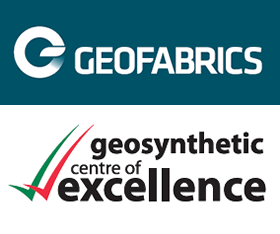 5 March 2010 – Parliamentary Secretary for Innovation and Industry Richard Marles today launched a $2.4million research centre that will investigate ways to contain potentially hazardous leaks from mine waste, domestic tips, tank farms and dams.
5 March 2010 – Parliamentary Secretary for Innovation and Industry Richard Marles today launched a $2.4million research centre that will investigate ways to contain potentially hazardous leaks from mine waste, domestic tips, tank farms and dams.
Australian manufacturer Geofabrics Australasia has privately funded the centre, which will test the chemical reactivity, UV resistance and friction properties of materials used to line waste facilities. The new Geosynthetic Centre of Excellence in Molendinar, South Queensland, will also be used to test and develop coastal protection products, which are in demand along the Queensland coast, nationally and internationally.
Geofabrics Australasia Managing Director Brendan Swifte said the Centre was part of a $6million investment in research and development across the business, which manufactures a range of state-of-the-art products including a world-first geosynthetic clay liner that is resistant to high pH solutions, such as those found in the mining industry.
“This is a world class R&D laboratory that will improve our understanding of geosynthetics and their performance in critical applications,” Mr Swifte said.
“This was driven by the Australian engineering industry searching for answers to questions relating to geosynthetic performance that were not able to be tested in the traditional quality assurance laboratories.”
What makes this facility unique is that it is open to regulators, consulting engineers, contractors and academics to carry out application based research and testing to develop site-specific solutions. The research program will be relevant for the civil engineering, mining and construction industries.
“In the past, we had to export some testing to specialist laboratories in the United States, which was expensive, slow and difficult because we had to export hazardous liquors for testing,” Mr Swifte said.
“The Centre of Excellence means we can work locally with clients who want to develop responsible, evidence-based solutions for their particular sites. That means better outcomes for our customers, and the environment.”
The Geosynthetics Centre of Excellence houses equipment that is the first of its kind in Australia, including a 300mmx300mm shear box, transmissivity apparatus and high pressure liner testing apparatus, and will soon offer a geosynthetic clay liner overlap apparatus. It is also equipped with flexible wall permeameters for use with aggressive liquors, 50kN Instron Tensile apparatus, large volume screw compressor, dropcone apparatus, microscope and UV equipment.
Mr Swifte said Geofabrics had worked with Monash University, University of SA, the National Marine Science Centre, Manly Water Research Laboratory and the University of Wisconsin. He hoped the Centre would promote further local and international collaboration: “This innovation will not only drive our business in a competitive global market, it will also foster Australian academic expertise in this critical field and provide opportunities for students.”
Geofabrics Australasia was established in Australia 30 years ago, and has been manufacturing here for 20 years. Its products include bidim, which is part of most major Queensland roads and contains 75% recycled materials (PET bottles), and Megaflo — which was recently selected as the drainage system for six FIFA World Cup soccer venues in South Africa.
Geofabrics is the only Australian manufacturer of geotextiles and geosynthetic clay liners and it exports to New Zealand, Asia, the South Pacific, Europe, South Africa and South America. It has manufacturing plants in Molendinar, Queensland, and Albury, Victoria.
Mr Swifte said Federal Government policies including the Strategic Investment Program grants, the Researcher in Business program, and tax incentives for R&D expenditure helped to drive the firms innovation.
MEDIA CONTACT
Michelle Edmunds
+61 0413 120 342











